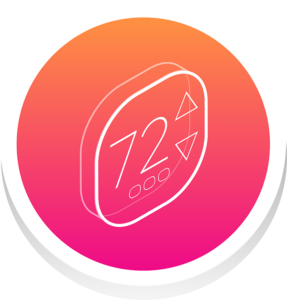Application Guidance: Advanced Thermostats
Features: When selecting an advanced thermostat, look for the features required by your application. Do you have multiple zones or units that are controlled by a single schedule? Do you need notification if the systems are either not reaching target temperatures or are operating during non-business hours? Perhaps your application requires special sensors, such as occupancy, temperature, or carbon dioxide, or you have an area that requires restricting the allowable temperatures. Every advanced thermostat is different. In addition, make sure to evaluate compatibility with your heating/cooling equipment before you purchase.
Installation: While some advanced thermostats may be installed by the property owner or facilities manager, most are best installed and set up by professionals. The installation procedure requires specific information, such as typical occupied days/hours, the type of heating/cooling equipment, and preferred comfort temperatures.
Commissioning: The thermostat settings may need adjustment after installation to improve performance and save energy. In general, relaxing heating and cooling temperatures in non-business or unoccupied hours saves energy; often this takes adjustment to ensure proper temperatures are achieved at the beginning of business hours. Seldom-used zones could use separate occupancy sensors to ensure optimal savings. Some zones would benefit from additional temperature sensors to improve performance, especially in areas with direct solar gain. In addition, one can set the types of notifications or alerts for maintenance (e.g., changing filters), or “lock” the thermostat settings so they are not changed by unauthorized persons. Developing and using setpoints for holidays—e.g., Monday holidays, Thanksgiving break—will also reduce energy.
